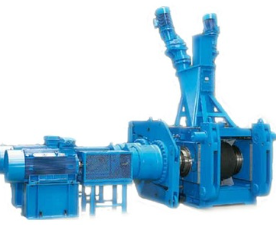How should compound fertilizer manufacturers select mixing equipment
Different industries use different mixers due to different types, characteristics, using and subsequent treatment methods of raw materials. The selection of a suitable mixer for compound fertilizer production plays an important role in ensuring the smooth progress of production and the final quality of products. The editor will show you how to choose a suitable mixer for compound fertilizer manufacturers.
1. The following aspects should be considered when selecting a mixer:
1.1 Types and characteristics of mixed raw materials;
1.2 Requirements for mixing uniformity;
1.3 Mixing time and amount of processing;
1.4 Running costs involving mixing power consumption, wearing parts and running rate, etc.
2. Notes for common mixers:
2.1 For mixing operations that require high mixing uniformity, batch mixers should be selected; for the mixing of bulk materials with low uniformity requirements, cylindrical mixers and screw continuous mixers can be used.
2.2 For mixing operations that require adding additional materials like water, slurry and steam, it is advisable to use wheel grinding, planetary grinding, and mixing blade mixers. This kind of mixing mostly adopts wet operation. The above-mentioned mixers have a large processing capacity and are easy to achieve sealing requirements.
2.3 For powdery or granular materials, such as compound fertilizer production raw materials, potash fertilizer or potassium-based compound fertilizer raw materials, etc., vertical blade mixers, various types of paddle mixers or ribbon mixers can be used.
2.4 For raw materials that are prone to explosion under impact and severe friction, such as potassium nitrate and compound fertilizers with it as the main raw material, a mixer with a softer mixing process, such as a wheel-rolling mixer or a ribbon mixer, should be used in the production.
2.5 For materials that are easy to agglomerate and need to be finely crushed, and the requirements for mixing uniformity are relatively high, it is appropriate to use a shovel-type forced mixer and a planetary wheel-type mixer.
3. Conclusion
Generally speaking, some of the existing domestic mixing equipment has problems such as few varieties and specifications, lack of large-scale products and low overall grades, which cannot meet the development needs of our country's fertilizer industry. The variety series and product upgrading should be expanded as soon as possible, so as to better meet the material mixing needs of the fertilizer industry.





